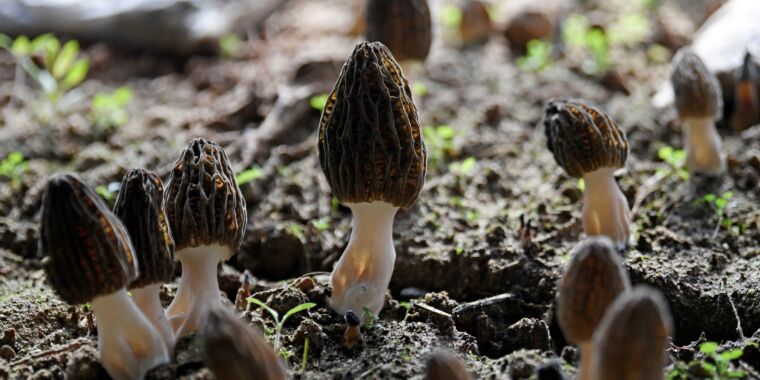Unveiling the Dark Side of True Morel Mushrooms
True morel mushrooms are universally held in high regard, known as prized culinary delicacies that come with a hefty price tag yet are considered safe for consumption. Nonetheless, these spongy, earthy forest treasures harbor a sinister aspect—a side which, at times, manifests lethality—illuminating the stark scarcity of our understanding regarding morels and fungi as a whole.
Outbreak Analysis of Poisonings Linked to Morel Mushrooms
Montana health officials recently disclosed an outbreak analysis detailing poisonings linked to these honeycombed fungi that occurred during March and April of the previous year. The outbreak impacted 51 individuals who dined at the same restaurant, resulting in four individuals requiring urgent care. Tragically, three patients necessitated hospitalization, with two losing their lives.
The report, unveiled in the Centers for Disease Control and Prevention’s Morbidity and Mortality Weekly Report, refrained from directly naming the restaurant. However, state and local health departments identified the location as Dave’s Sushi in Bozeman, making it evident that the incidents derived from consuming a “special sushi roll” introduced by the restaurant, which integrated salmon and morel mushrooms.
The Critical Culinary Misstep
The mysterious poison perpetrated by the morels showcased swift and vicious progression, with symptoms emerging approximately an hour post-consumption, characterized by severe vomiting and diarrhea. Gastrointestinal distress was described as overwhelming, leading to clinical signs of dehydration in those necessitating hospitalization, exacerbating the situation for individuals with pre-existing medical conditions.
Insights from the Investigation
The outbreak prompted a detailed investigation that revealed compelling associations. Those who ingested the special sushi roll containing morel mushrooms were disproportionately affected, emphasizing the considerable risk posed by consuming the suspect food items. The recurrence of symptoms aligned with the quantity of the mushroom-laden rolls consumed, indicating a dose-dependent relationship between poisoning severity and mushroom intake.
Additionally, an examination of the cooking technique revealed a substantial difference in illness odds based on whether the mushrooms were served raw or slightly cooked. Corresponding efforts between state and local health officials, the FDA, and the CDC sought to disentangle the incident’s intricate web, as seen in the FDA’s comprehensive molecular and toxin screenings, which shed no light on the poisoning mechanism.
Closing Remarks
Tracing the mushrooms’ origin to China and ascertaining their true morel identity—Morchella sextelata—brought some clarity. The absence of gyromitrin, a toxic component present in false morels, signaled a divergence from a commonly identified lethal compound.
Coordinated responses among various health departments mitigated the risk of further outbreaks, underscoring the importance of vigilant scrutiny over food origins, handling, and quality, especially in an era when obscure and unforeseen dangers may lurk within the most esteemed culinary indulgences.
Image/Photo credit: source url





